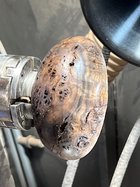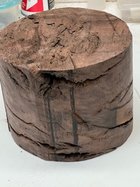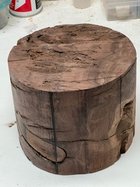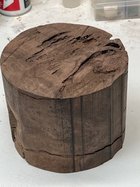I do a lot of epoxy repair on cracked wood - most often smaller stuff like home dried olive wood with a lot of cracks to make a pepper mill blank but also bigger stuff like your bowl blanks..
if you have a vacuum chamber and pressure pot already, then you are good to go - wrap your blank in a resin barrier - I have had the best luck with clear vinyl they sell as a dining table top protector, resin tape & hot melt glue... make sure you have a couple of inches of barrier above your blank as you need to keep it covered and resin will bubble as you pull air out
use slow set resin - 50-60 min working time/pot life - put blank in vacuum chamber with resin level such that the blank is completely covered, put under vacuum to pull out entrained air, top off as necessary, after cycling vacuum several times over 15-20 minutes cover with resin a final time and put in pressure pot overnight to cure
It will amaze you how well this works - voids in the middle of the blank get filled and there is minimal defects in the finished surface that you have to deal with




